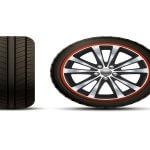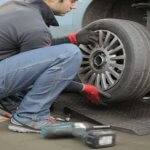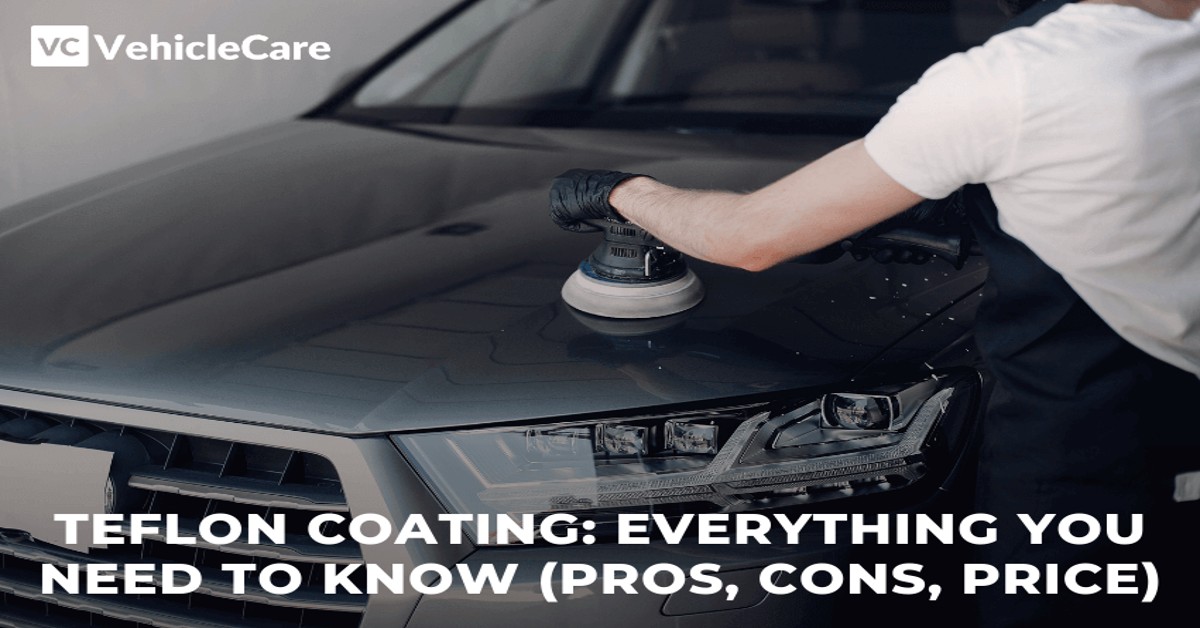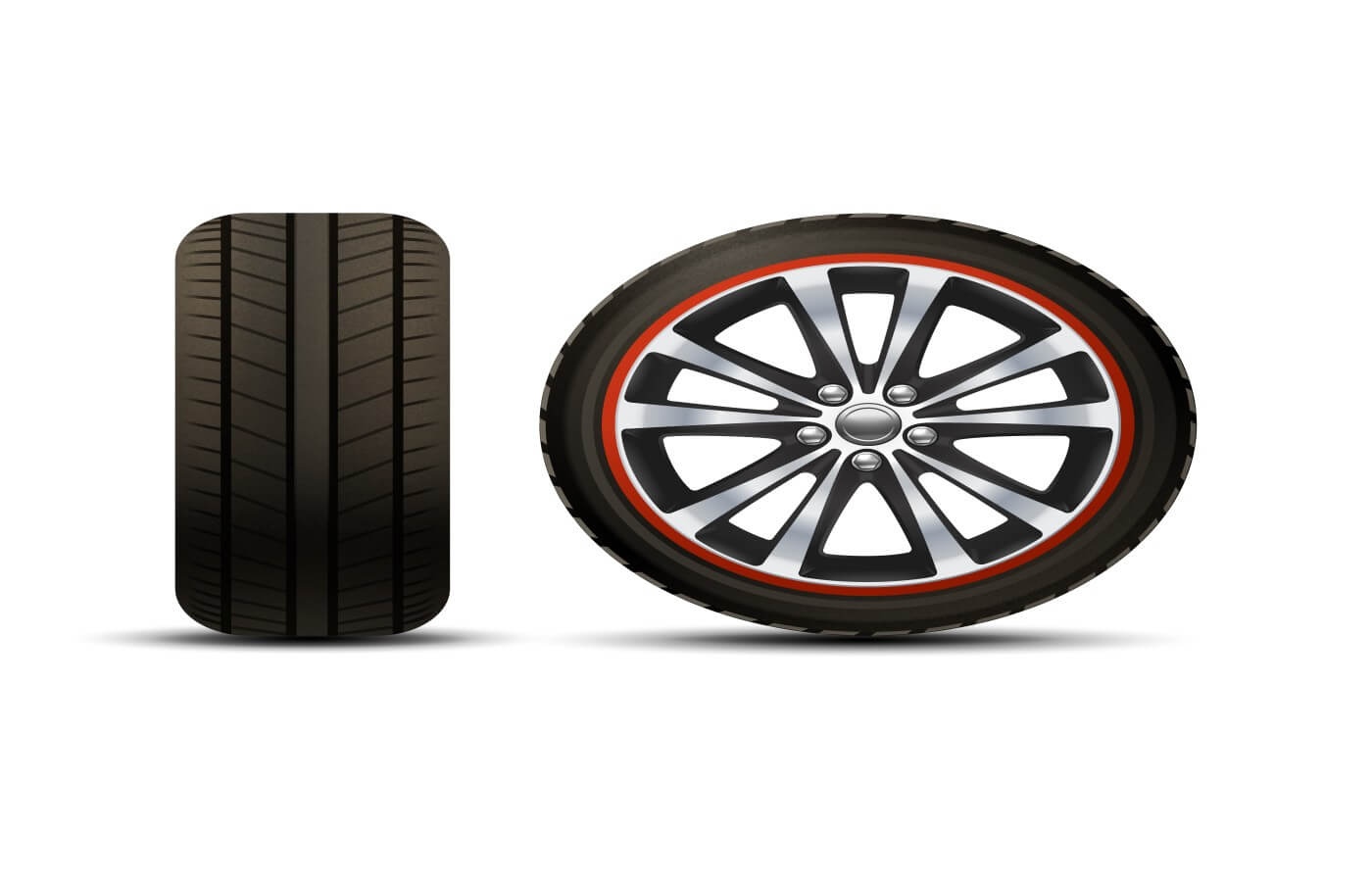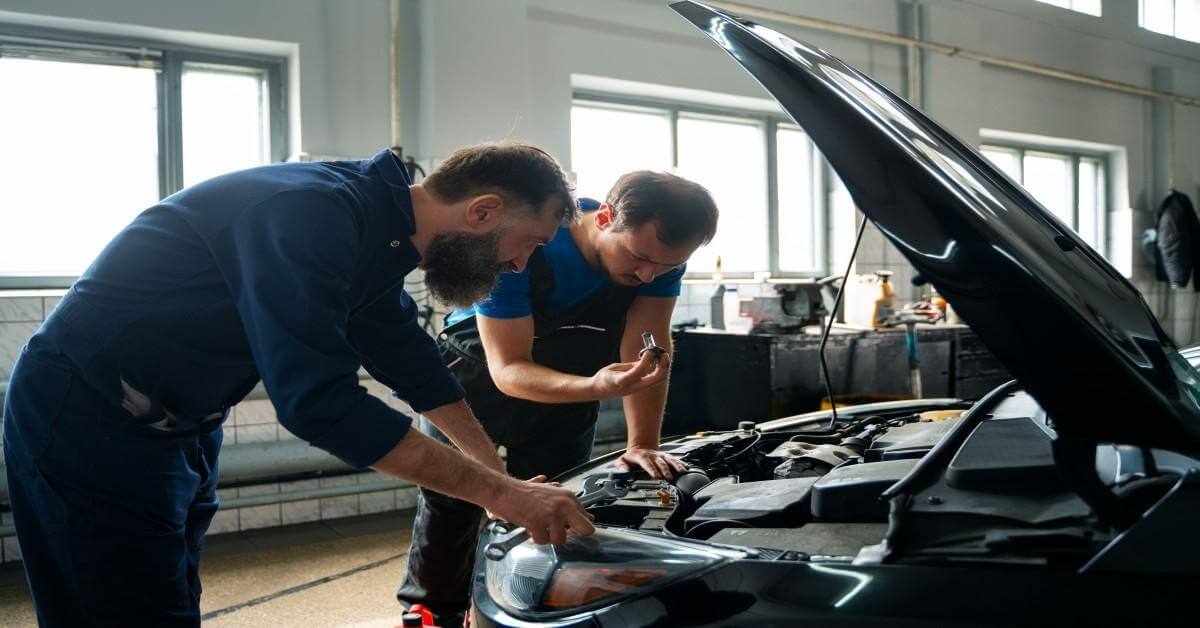One of the most costly and valuable personal items is a car. One of the key concerns for most car owners is how to maintain such a valuable possession. Car owners frequently pay special attention to the exterior paint of their vehicles since a well-kept finish gives the vehicle a more professional appearance and makes it appear new.
When it comes to car exterior paint maintenance, you have a lot of choices. The application of Teflon coating is one of the most frequently suggested measurements by vehicle dealerships and auto repair companies. There are many teflon coating products available in the market. The Teflon layer, in essence, creates an antimicrobial barrier. For car paint protection, a Teflon coating is a popular option. Teflon coating may improve the appearance of a car by making it more glossy.
Table of Contents
What is Teflon Coating?
Teflon coating is also referred to as an anti-rust or paint protection coating. Teflon is a fluoropolymer that has been chemically produced. Chemours, a DuPont spin-off, was the first to discover the Teflon chemical compound. Later on, this compound gained popularity and evolved into its form of paint sealer. Teflon’s major characteristics are non-stick, low friction, and dielectric qualities, all of which make it an efficient automotive paint protector.
Many professionals and auto detailing shops propose Teflon coating as a paint protection layer that aids in the maintenance of the car.
Teflon Coating for Cars
A suitable Teflon coat is typically 0.2 microns thick. Teflon is a non-sticky chemical form of synthetic fluoropolymer that minimizes friction on the surface it is applied to, reducing dust and grime adhesion to your car’s exterior and detracting from its appearance.
Over the paint, these coatings form a fairly thick waterproof and heat-resistant protective layer. As a result, high-quality Teflon not only improves the gloss and luster of the paint, but also inhibits rusting from water contact and, to some extent, protects the paint from harsh weather conditions like acid rain.
Various laboratory experiments have shown that Teflon can tolerate temperatures up to 260 degrees Celsius. This means the paint will be protected from damage caused by prolonged exposure to RV light, as well as wear and tear caused by severe temperatures or sudden temperature changes.
The underbody of a car may also be coated with Teflon. A spray-on, thick, rubberized paint that produces a 2-3mm thick coating all down the underneath of the car, as well as a thinner, clear lacquer-like finish that covers the entire underside, is extensively employed on cars in many countries. You can even have rust-preventive coating material injected into crevices like the bottom of doors and door sills to protect them from corrosion.
Any additional underbody coating should ideally be put in while the car is completely new and clean. Because the underbody of a car is subjected to far more wear, car manufacturers already utilize thick paints and sealants, but adding an underbody layer is unavoidable. This is particularly true in coastal cities, where saltwater quickly corrodes the underbelly of vehicles.
Teflon Coating Process
Clean the car
It is vital to ensure that the paint finish is clean and polished before applying the Teflon coating. As a result, the initial step in the coating process must be a thorough cleaning of the entire car body. Use a delicate cloth (microfiber cloths are highly suggested) and car wash soap to prevent scratches on the outside paint before the Teflon coating is applied.
Polish the car’s exterior
The next step is to polish and wax the paint finish after it has been gently washed. Before applying the protective layer, it is vital to polish the paint finish to bring it to its best condition and provide the most shine. This is especially crucial for antique cars with peeling paint.
Coat the surface with Teflon
After the car has been washed and polished, it is time to apply the Teflon coating. The Teflon liquid has a strong odor, but this will dissipate once the finish has cured. It is recommended that you apply the Teflon liquid to the car paint with a soft cloth. It would take a few minutes to thoroughly dry.
After the Teflon has dried, the most difficult portion of the process begins. After the Teflon finish has dried, knead the next layer with a dry towel to ensure that it adheres and becomes bright and clear. It is necessary to use vehicle dashboard polish on exterior plastic pieces such as mudguards. This is a unique situation.
After the Teflon coating has been applied, it is not suggested that you use standard shampoo or detergents on the paint finish, as this can significantly reduce the thickness of the coating. Use the car shampoo instead.
Pros of Teflon Coating
The most obvious benefit of putting Teflon coating on is that your car’s paint will have a highly attractive sheen as soon as the operation is completed. Furthermore, unless the Teflon coating is put improperly, even slight scratches in the paint will vanish.
Teflon coating also serves as a paint protection film, producing a layer over the paint that protects minor scratches. While most newer cars have a high-gloss paint finish, a coat of Teflon will keep the car looking great for longer. Finally, a coat of Teflon will extend the life of the paint if applied every few months.
Some other pros of Teflon Coating are listed below:
Prevents Scratches
We have no idea that while dusting our car with a cloth, we are producing micro scratches on the paint surface. The addition of a Teflon layer to the automobile makes dust removal easier.
Induces Hydrophobicity
Water stains can be damaging to a car’s paint surface, and the harder the water, the more pronounced the stain. Water does not stay on a Teflon-coated car’s surface and easily rolls away, preventing stains and preserving the sheen.
Removes Scratches
A Teflon coat can be used to remove scratches on the paint surface, however, scratches that have penetrated the paint layer cannot be removed.
Gives protection from natural factors
A Teflon layer on the paint surface of your automobile protects the paint from the effects of the natural elements, keeping your car looking new for longer.
Cons of Teflon Coating
First and foremost, there is nothing ‘wrong’ about spraying your car with Teflon. However, there are several drawbacks to the entire method through which many people get the coating placed on their cars. It is important to note that Teflon is a registered trademark of DuPont, which is now owned by Chemours India, a Subsidiary set up of Dupont.
However, numerous workshops have been known to dupe consumers by simply waxing and machine polishing the car in the guise of putting a Teflon coating. Furthermore, the polishes used by such unpredictable auto detailing shops are unrelated to Teflon and hence do not provide the same benefits.
As a result, many vehicle owners believe they have been duped because the lesser treatment utilized does not give the benefits associated with Teflon coatings. Non-Teflon items have a much shorter shine than Teflon ones. Unfortunately, the unsuspecting buyer is unaware that he has been short-changed and thus misses out on the Teflon coating’s benefits.
A few other cons of Teflon Coating are as follows:
If washed incorrectly, it will be removed
The Teflon coat on your car can be removed by washing it extensively with soap or another detergent other than a car wash. To ensure that the Teflon layer lasts as long as possible, it is recommended that you only wash your automobile when necessary.
Life expectancy is reduced
In comparison to a ceramic coat, which can last up to five years, or a Paint Protection Film (PPF), which can last up to ten years, a Teflon coat can last anywhere from six months to a year, depending on the condition and situation.
Expensive
Although it is less expensive than ceramic and PPF coating when utilized for a short period, it is a more expensive choice in the long term.
Teflon Coating Price
The Teflon coating was more expensive than other common treatments such as hard-waxing. While Teflon is less expensive than a ceramic covering, it is not as long-lasting. The Teflon coating, on the other hand, is the best alternative if you need effective protection at a low cost.
Depending on the size of the area to be coated, the cost of putting in Teflon coating can vary. In addition, the price of Teflon coating treatment is influenced by your location. If you live in a larger city, you will almost certainly be charged a greater price for the same treatment than if you go to a service shop in a smaller city.
The most widely used and highly recommended product for this type of treatment is Dupont’s Teflon coating. The type of product that the dealership will use should be carefully considered by car owners. In certain circumstances, vendors will claim to be putting Teflon coating while using polishing wax.
Maintenance of Teflon Coating
- When necessary, only use a high-quality car wash.
- Abrasives should be avoided since they can rip the coating.
- Using a microfiber cloth, dust
- Make use of high-quality car polish.
- After the vehicle has been in the rain, wipe it down using a microfiber towel.
Teflon Coating vs Ceramic Coating
Ceramic coating is another option for Teflon protection. A transparent coat of ceramic coating protects the automotive paint from various exterior threats. The ceramic coating, unlike Teflon, is constructed of Carborundum, one of the toughest materials known to man. The paint of your car will be protected against rust and scratches with this coat. Ceramic provides a more permanent and effective solution when it comes to protection. The ceramic coating can last up to three years or perhaps longer. The ceramic coating, however, is much more expensive than the Teflon covering.



